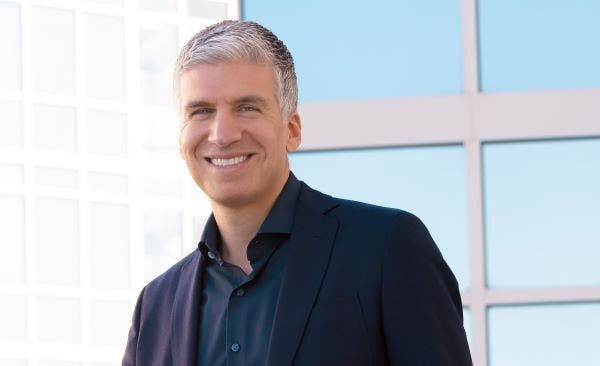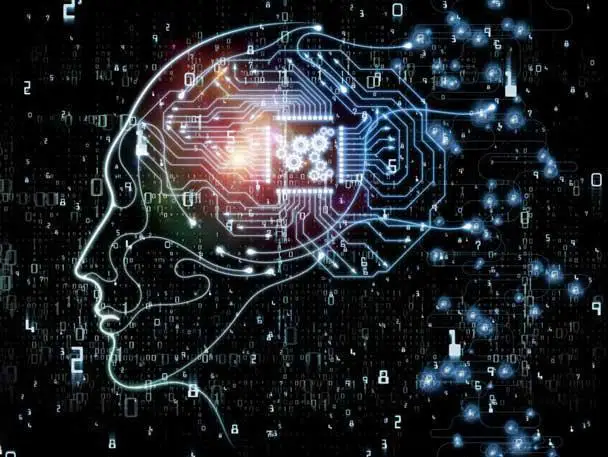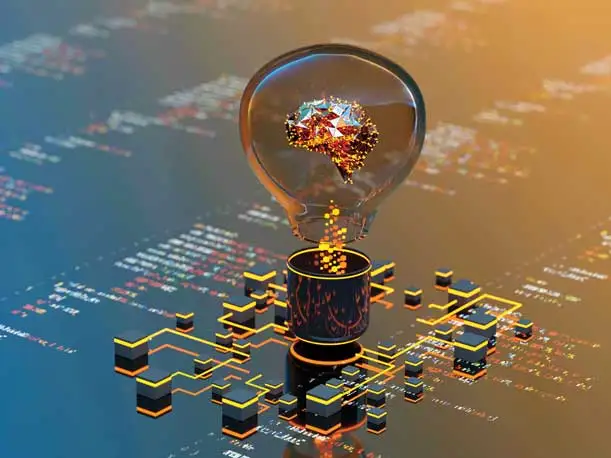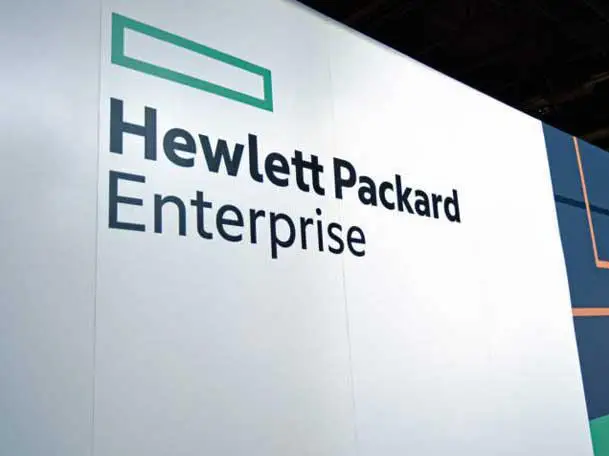Juniper Networks CEO: HPE-Juniper Combo Will Clear ‘Cluttered’ AI Networking Space
‘My view is that AI is going to be as big, if not even bigger than all of the previous trends combined. And I believe that the kind of moves that are necessary to capture this opportunity are the big bold moves. This combination with HPE is exactly that,’ Juniper Networks’ CEO Rami Rahmi tells CRN in an exclusive interview.

The $14 billion megadeal unveiled in January between HPE and Juniper Networks underscores the increasing importance of AI-powered networking. The combination of the two networking companies, which is expected to close in late 2024 or early 2025, could establish a new battleground in the networking space. The deal was approved by Juniper shareholders this month, and if completed, Rahim will be leading the combined HPE networking business under HPE CEO Antonio Neri, which includes HPE’s popular Aruba business.
Rahim sees two distinct opportunities in AI: AI for networking, or simplifying the operations of networking, and networking for AI, which involves delivering on the infrastructure that makes AI possible. While AI still might be in a bit of a hype cycle, the longtime tech CEO told CRN that the movement has “a lot of legs” and that the industry is just scratching the surface of this opportunity.
Rahim sat down with CRN to talk about the pending HPE-Juniper combination and its expected impact on the AI market and the networking competition, the strengths that Juniper will be bringing to HPE upon the close of the deal, and what Juniper is working on today and the resources its currently offering partners looking to build their own AI networking practices.
Here are excerpts from the conversation.

Why is the pending acquisition by HPE such a big deal for Juniper and its partners and customers?
I’ve been talking to a lot of customers and partners about this deal. Juniper was born in the age of the internet. We’ve made our name by solving IT for networking at scale for the largest, most mission critical customers in the world. Since then, we’ve gone through several different market inflection points; smartphones, cloud computing [and] software defined networking. Today, of course, we’re in the age of AI. And my view is that AI is going to be as big, if not even bigger than all of the previous trends combined. And I believe that the kind of moves that are necessary to capture this opportunity are the big bold moves. This combination with HPE is exactly that. It gives us an ability to accelerate our innovation across the entire networking stack. In fact, not even the networking stack, but the entire IT stack, compute, storage, networking, silicon systems and software, in all of the relevant networking domains for our customers; campus, branch, data center, wide area networks, and to all of the different customer verticals, certainly enterprise, but also cloud and service providers, as well. I think together with HPE, we can build truly comprehensive, competitive, end-to-end experience-first networking solutions that are going to make a big difference for our customers and our partners. So, I honestly am super excited about the power of this combination.
I’m fortunate enough to be able to lead this combined $11 billion networking business under the HPE umbrella. Once this deal passes regulatory approval, I think for our customers and partners, it will make Juniper far more competitive for their businesses, for the market trends and inflections that are happening around us. And now it’s just a matter of translating the words that I’m telling you into true actions. And that of course, can only happen after the close of the transaction, which is anticipated to be at the end this year or early part of next year. It’s humbling for me, [and] I’ve got a lot of work ahead, but I’m totally up to the challenge. I’m very invested in seeing this through and making it a massive, massive success for our customers and partners.

How will this deal help HPE/Juniper go head-to-head against its networking rivals in the AI space?
This applies to Juniper today as a standalone company, but it will also apply should this deal go through, and we become a larger combined company in the future. There’s a lot of talk about AI and it can be very confusing. It’s a cluttered space. So, I think the best thing that customers and partners can do is to look at actual examples of deployments. And more importantly, the value that has been delivered as a result of these AI-based deployments for our customers where we are reducing the time to deployment of new solutions, drastically eliminating trouble tickets -- which reduces the total cost of ownership for running a network dramatically [and] accelerating the time to identify issues and in fact, proactively address issues before they start to impact the customer experience. Ultimately, there are a lot of customers that we have that are willing to tell that story and to basically separate us from what I call “PowerPoint AI.”
From a competitive standpoint, I know there’s a lot of noise out there about the importance of observability. The ability to tap into telemetry that’s coming from the various different parts of the network. But I really do think that this is just a part of the overall puzzle. We have not only been collecting data and doing a great job of collecting it in a common cloud platform that spans the different parts of network -- it’s not done in silos like some of our peers -- it’s actually now across wireless, wired, WAN and security. And importantly, we don’t stop there. We’re gleaning the insights, we’re learning and achieving breakthrough values to our customers as a result of this data. So, data is an important ingredient. But collecting it is only a part of the problem. Not everybody recognizes how big a lift this is and what needs to be done to truly translate that data into amazing value for our customers. We have embedded data scientists in strategic parts of the organization that can learn and ultimately program that capability into the AI engine so that we can streamline and improve the experience for our customers. Just take customer support, for example, we have embedded data scientists in to the customer support organization that sits right next to the folks that are taking the calls and resolving problems for our customers so that once we understand the issues that occur, that gets built into the AI ops capabilities and into the AIOps technology and that translates into proactively solving all such problems in the future so that humans don’t even need to be involved. That’s what we’ve done over the last few years, and it’s worked remarkably well for us.

How big is the AI opportunity for partners?
I view [the opportunity] in two big areas. There’s AI for networking, and then there’s networking for AI. AI for networking is really around simplifying the operations of networking and delivering on a really remarkable experience to the end users that are using that network. We’ve already delivered immense value in this space with our Mist technology. Our Mist AIOps-based solutions grew 70 percent year over year in 2023. And we’ve taken that AI native platform across different domains, including the data center and the wide area network. The opportunity here is to take incredible solutions that we have built at Juniper and combine them with really great solutions that are coming from HPE in a best of breed approach to deliver even more value to our customers from the standpoint of AIOps. We’re going to have a much broader worldwide footprint to work off of, and AIOps thrives on data. So, if we can now extract more data from a more global, massive worldwide footprint, that will only make us even more able to deliver on the value to our customers that comes from the AIOps platform that we’ve built.
The other really big opportunity here is networking for AI. Here, it’s about delivering on the infrastructure that makes AI possible to begin with -- the AI clustered data center networks. If you think about the potential here of Juniper and HPE across compute, storage, networking, GPU-based servers, the full software stack, the professional services, the business models and the hybrid cloud capabilities that you get from GreenLake, the opportunity is just massive. So, from both perspectives, networking for AI and AI for networking, I think the power and the potential of this combination is really huge.

You’ve said that AI represents a once in a generation kind of opportunity. Why is this opportunity so different compared to other networking trends we’ve seen over the years?
If you talk to CIOs and IT professionals today, they’re really talking about a couple of big challenges. One is around a serious skill shortage gap, or an inability to invest sufficiently to address the big strategic objectives of their companies. A lot of this stems from the fact that there are just too many IT professionals that are just bogged down by doing the day-to-day, troubleshooting-type activities, keeping the lights on, the firefighting that typically comes with the IT role. So today, typically, you’ll find maybe 70 to 80 percent of skilled IT staff that are just too busy keeping the network running as opposed to focusing on innovation on keeping the disruptors out of their business or actually disrupting themselves. This is where AI can result in game-changing capabilities for our customers. It will free up the time of IT professionals, it will resolve much of the skill shortage gap, it will better enable IT teams to fight the cyber criminals out there that are leveraging artificial intelligence to do their dirty work. That’s why I think the need for the technology is so immense today. Then of course, there’s the question of how do you even enable AI itself? That comes down to the infrastructure and this is where customers are asking for scale, performance and openness of the solutions. Nobody wants a locked-in tech solution for the development of these next generation AI data centers that are going to power artificial intelligence. I think all the ingredients are coming together for a truly massive opportunity for technology providers and partners that are working with us to deliver on this potential.
What resources is Juniper offering for partners that are building their own AI practices?
It’s now been about four years ago that we built an AI specialization specifically for our partners. We’ve found that [with] partners that we have invested or co-invested together to capture this AI-driven enterprise opportunity, specifically in what we call our Elite Plus program, saw their revenue grow 43 percent year-over-year. But we’re not stopping there. We recently rolled out a program for partners to operate, AI-assured managed services on behalf of their customers and what that means is partners will essentially be able to leverage artificial intelligence to assure the services that they’re delivering to their customers, and to do so while keeping operational costs in check. That is the true promise to partners in leveraging artificial intelligence to solve their customers’ biggest problems. With that particular offering, it’s relatively new, but we’ve already signed up 30 partners and it’s growing from there.
The AI-assured managed services program is relatively new and we’re seeing great demand from partners for it, so stay tuned [because] we will soon be rolling out a program that enables partners to tap into the big potential of the networking for AI opportunity. To do this, we’re assembling partners with some of the industry’s largest AI companies and AI technology players to basically help our partners in offering this AI infrastructure, not just for learning, but increasingly important is the inference part. The doing the magic with AI, or all of the various different enterprise verticals that exists. That one will be rolled out soon.
How is Juniper working with other technology providers to further its AI strategy?
We wouldn’t be able to achieve the solutions that our customers want without strong partnerships with the various different players in the AI ecosystem. Having said that, I think it’s also important to understand that our customers today want openness and flexibility. Nobody wants a closed end-to-end solution across compute, GPUs, networking, storage, etc. That I believe is where the big opportunity lies to prove to our customers that they can meet the requirements of developing these high-scale highly efficient, especially power efficient, AI clustered data centers, while at the same time maintaining the flexibility and their ability to choose best of breed solutions between different layers of the technology stack. That’s exactly what we’re working on. To give a concrete example of the kinds of things that Juniper is doing, we have built an AI lab here at our headquarters in Sunnyvale that enables us to run different test scenarios for AI data centers, that leverage Ethernet networking and allows us to compare the performance and efficiency benefits of Ethernet for AI networking with InfiniBand. That’s a question that’s on the mind of all of our customers and partners and we’re when we’re able to offer them concrete evidence of the ability of Ethernet to meet the stringent requirements of networking for AI, it’s a game changer.

In addition to Juniper Mist on the AI front, what are the other pieces that Juniper is bringing to HPE?
There are three major domains. There’s the wide-area network, where Juniper obviously has tremendous strength and relationships with some of the largest service providers around the world [and] all of the large cloud providers. There, the opportunity with HPE is just increase our relevance across different elements of the technology stack to have more scale, to enable us to do more silicon development and software development that can make us far more relevant to telecom operators and cloud providers around the world that are investing in their infrastructure in the data center, whether it be for the more traditional automated cloud data center opportunity, or for the next generation AI cluster networking opportunity. Here, the sky’s the limit, we bring the high-performance silicon developments and software to the table. HPE has compute, the storage, the GPU relationships, the Slingshot technology that was initially developed for high performance computing, that turns out to have immense benefits for the AI cluster networking opportunity as well. And then, of course, there’s the enterprise campus and branch, the secure client to cloud solutions across wireless, wired, wide area networking and security. Here, we really have great solutions and an opportunity to make them into an even better solution for our customers, not to mention the worldwide scale and the ability to have just more at bats with customers to demonstrate the value that we can bring together and to win new customers worldwide.
With the HPE-Juniper deal on track to close at year-end or early next year, what can partners expect for the rest of 2024 from Juniper?
Our partners are incredibly important to us. It’s great to see the progress and the success that we’ve seen with our partner ecosystem. When we were just getting started with this big enterprise pivot at Juniper, it was honestly more difficult to get the attention of partners that were busy that had a lot on their plates. Today, the tables have turned, and I think our partners have seen the incredible progress that Juniper has made across the board but especially in the enterprise. In Q3 of last year, it was the first quarter in juniper’s history where enterprise became more than 50 percent of our revenue. Partners have seen this and have recognized that we would not have been able to achieve this kind of success without really competitive, super differentiated solutions in the market and that’s what we have delivered. And then of course, we’ve invested in our partnership programs. I mentioned the AI specialization that’s now been in place for four years, the AI-assured managed services programs that we are now putting into place that are incredibly sticky that our customers and our partners are really gravitating towards. And we’re just getting started here. We’ve got a robust partnership set of programs and it’s only going to get better in time.
We would not have achieved the success that we have achieved at Juniper without our partners. The opportunity, especially in AI, although there might seem like there’s a hype cycle and it might be a little bit of that, but I really do think that there’s a lot of legs to this movement and we are scratching the surface of this opportunity. For our partners, I’d focus on the two big areas that I mentioned: AI for networking, and networking for AI. Each of these are multi-billion dollar growing opportunities that are still largely untapped and they’re there for the taking for those that can deliver on the technology and the services that our customers demand.